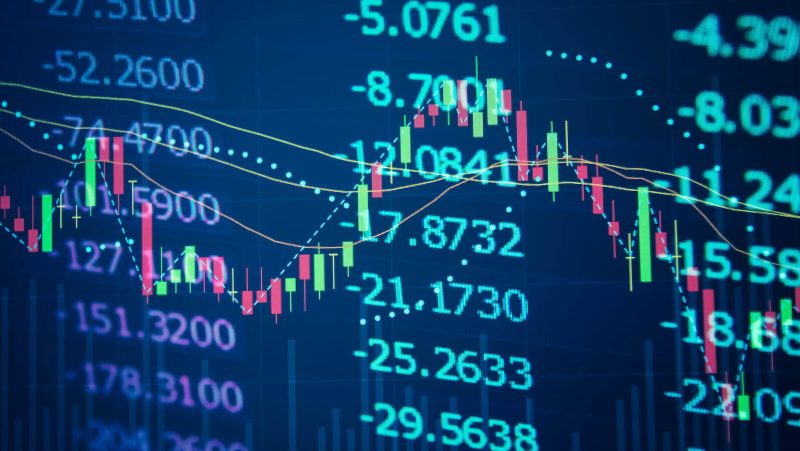For stock investors, currency trading (a.k.a. Forex) can feel tricky—mostly because its structure and mechanics are not as straightforward as those of other financial instruments. And that’s okay.
If you’ happen to be new to this space, we will cover the essentials while focusing on the topic of this article, which is the EUR/USD.
First, a few basics.
As you notice, currencies are stated in pairs. The first currency is the Base currency, while the second is the Quote currency. So, when looking at the EUR/USD, the EUR is the base, while the USD is the quote.
But here’s an easier way to view it:
If the EUR/USD has a price of 1.0770, then 1 Euro = 1.0770 US dollars ($1.07).
Forex doesn’t move in cents the way stocks do. Its moves, which are much smaller, are measured in “percentage in points,” aka “pips,” which are fractions of a currency unit. For many currencies, especially when the USD is the quote currency, pips are measured using four decimal points, so 1 pip = 0.0001, or ten-thousandths of a single currency unit.
So, if the EUR/USD is rising, it means the Euro is strengthening against the dollar; if EUR/USD is falling, it means the dollar is strengthening against the Euro.
However, strength or weakness is relative to the other currency in the pair but not to currencies outside the pair. This means you can’t always interpret a currency’s strength or weakness within a specific pair to indicate its standing in the global economy (you’d have to look at a given currency relative to a larger basket of currencies, such as the dollar index).
EUR/USD: Stuck in Neutral
The EUR/USD has been trading sideways for over two years, thanks to a balancing act between the US and European economies. Neither economy (or currency) is outperforming the other, and the weekly chart makes this pretty clear.
CHART 1. WEEKLY CHART OF THE EUR/USD ($EURUSD). The currency pair has been trading sideways for two years and it may stay that way for a while.Chart source: StockCharts.com. For educational purposes.
The red and green arrows illustrate how the EUR/USD has been bouncing off the Bollinger Bands in a volatile yet sideways manner since January 2023. The Relative Strength Index (RSI) below the chart shows what this looks like from a trend and momentum perspective (see green rectangle): there isn’t any, at least not enough to break out of the current trading range and hit a relatively overbought or oversold level.
Furthermore, analysts expect the pair to hover within this long-term range for some time. So, why bother, or rather, how do you trade this? And remember, when trading Forex, it’s always an active “trade,” not a set-and-forget investment. Let’s switch to the daily chart of the EUR/USD.
EUR/USD: An Opportunity for a Mean Reversion Swing Trade
In the daily chart of $EURUSD below, I used Quadrant Lines instead of drawing horizontal lines for each level of support and resistance.
CHART 2. DAILY CHART OF EUR/USD. Note the coordination between the Stochastic Oscillator and the peaks and troughs in the EUR/USD.Chart source: StockCharts.com. For educational purposes.
So, why Quadrant Lines? They’re cleaner and provide a general way to gauge potential overbought and oversold levels within a trading range (as long as price remains within that range).
When you’re facing a mean reversion scenario, here’s how to use Quadrant Lines:
- Buy near the 25% line if the price reverses upwards.
- Sell near the 75% line if the price pulls back from higher levels.
- Use the 50% line as a measure for direction. If the price crosses this line, it could signal a shift to the upper or lower quadrant.
In the chart of $EURUSD, the blue circles in the Stochastic Oscillator mark where overbought conditions occur at or relatively close to the 75% quadrant line. The red circles mark where oversold conditions occur at or near the 25% quadrant line.
Currently, the EUR/USD is making a bearish move toward the uptrend line (magenta trend line). It’s also approaching the 25% quadrant line while in oversold territory. If price reverses, either at the trend line or within the 25% quadrant, it may be an opportunity to go long EUR/USD until it fails toward the top of the range, in which case you can reverse the trade.
How Do You Trade EUR/USD Without a Forex Account?
To go long EUR/USD, you might consider the Invesco CurrencyShares Euro Trust ETF (FXE), but note that the trading volume tends to be thin. You can view this using StockCharts’ Symbol Summary (for FXE) page. However, if you’re not day trading FXE, the slippage shouldn’t be too bad.
What if the EUR/USD reaches the top of the range? How can you go long USD and short EUR? In this case, you might consider Invesco DB US Dollar Index Bullish Fund (UUP). The trading volume is much higher and you can view all of its stats in the Symbol Summary.
Why Follow the Forex Markets?
Currency trading isn’t for everyone, but when the stock market feels stuck (like there are too few opportunities out there) or too risky—especially in a bear market—Forex can offer fresh opportunities. You might not be able to trade most international stocks, but you can trade global currencies. Bottom line: it’s another way to keep your trading game active.
The Bottom Line
Navigating the EUR/USD can seem complex for Forex newcomers, but understanding its dynamics opens doors to new trading opportunities, especially when other markets stagnate. With the pair stuck in a sideways range, you can take a mean reversion approach using the above-mentioned tools. But if you’re willing to do the work, it presents another opportunity for you to diversify your portfolio.
Disclaimer: This blog is for educational purposes only and should not be construed as financial advice. The ideas and strategies should never be used without first assessing your own personal and financial situation, or without consulting a financial professional.



























